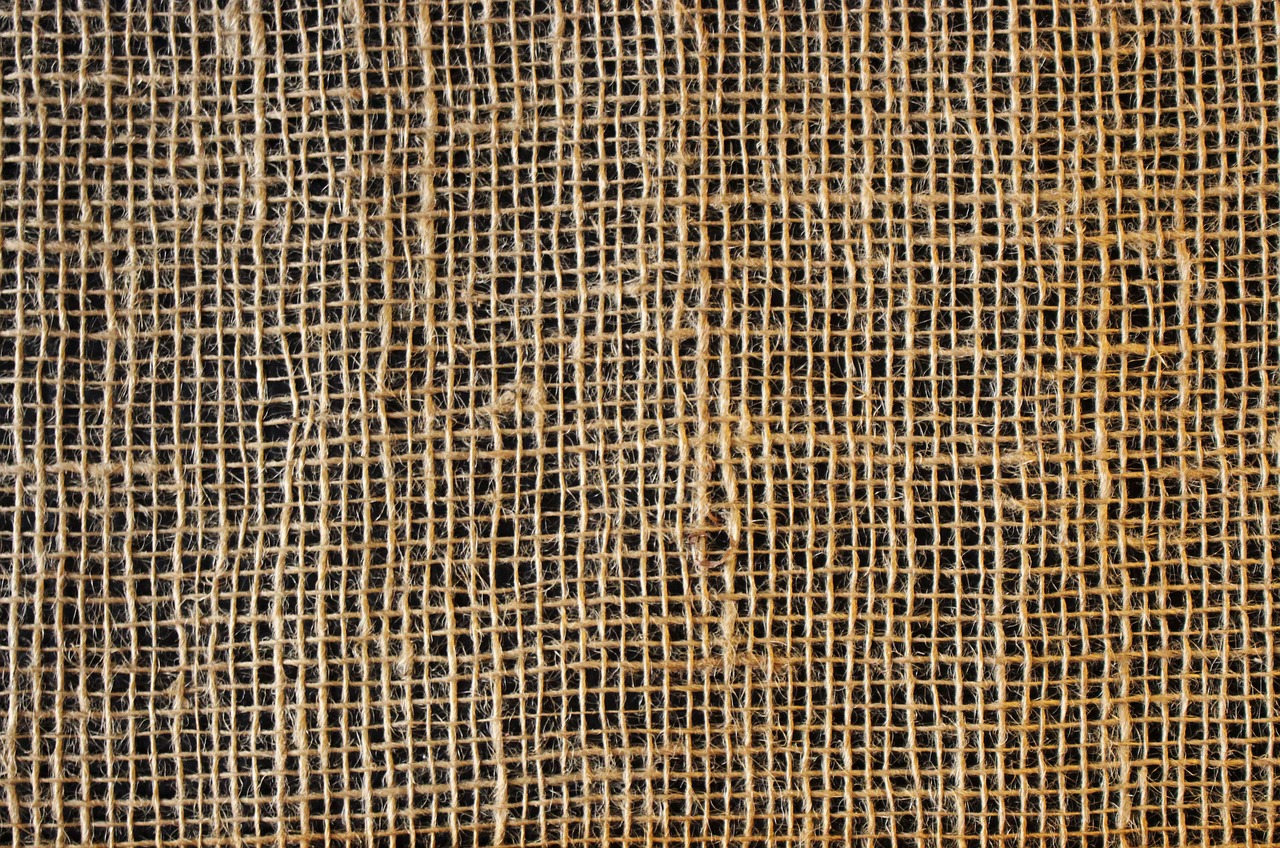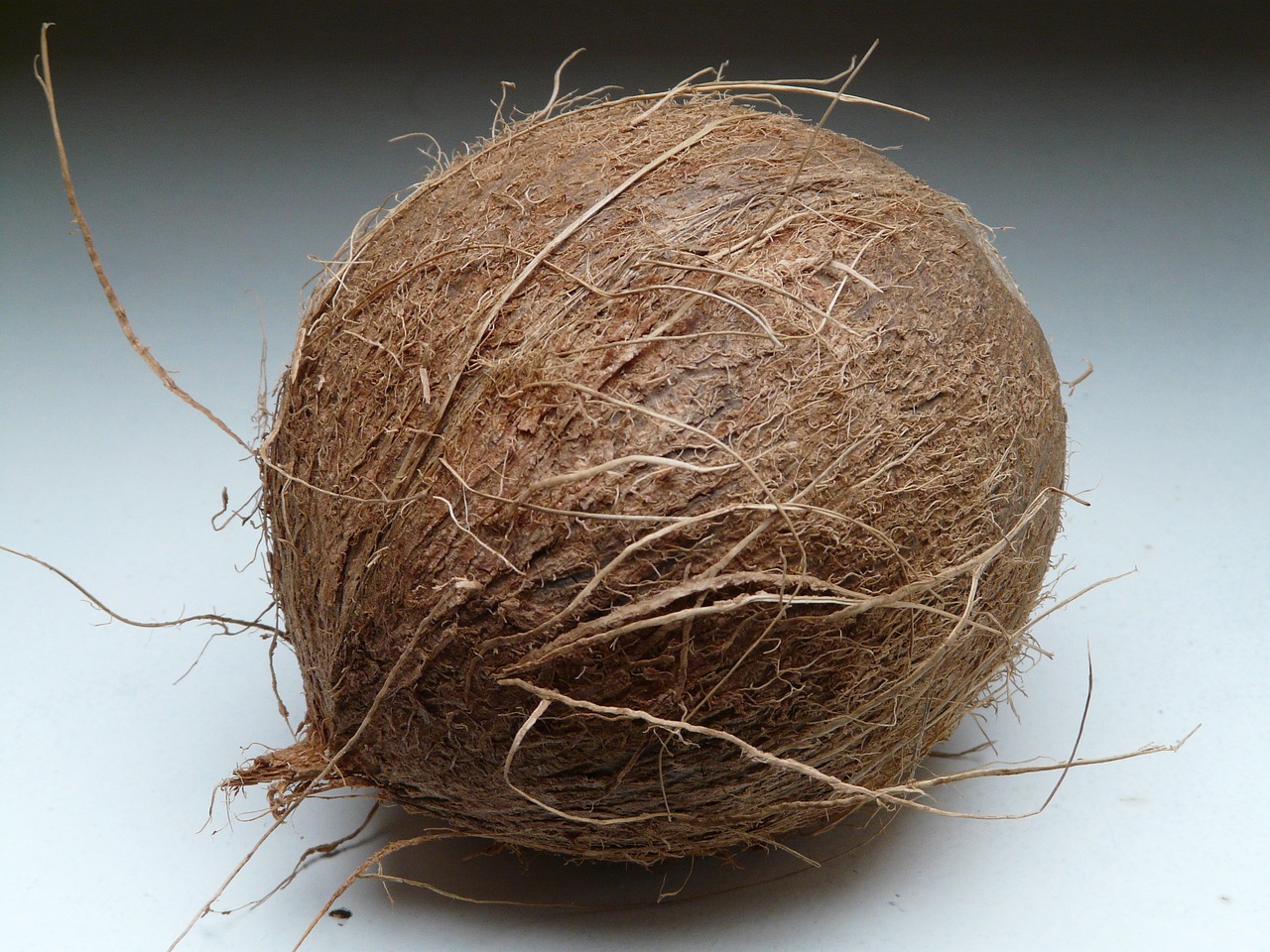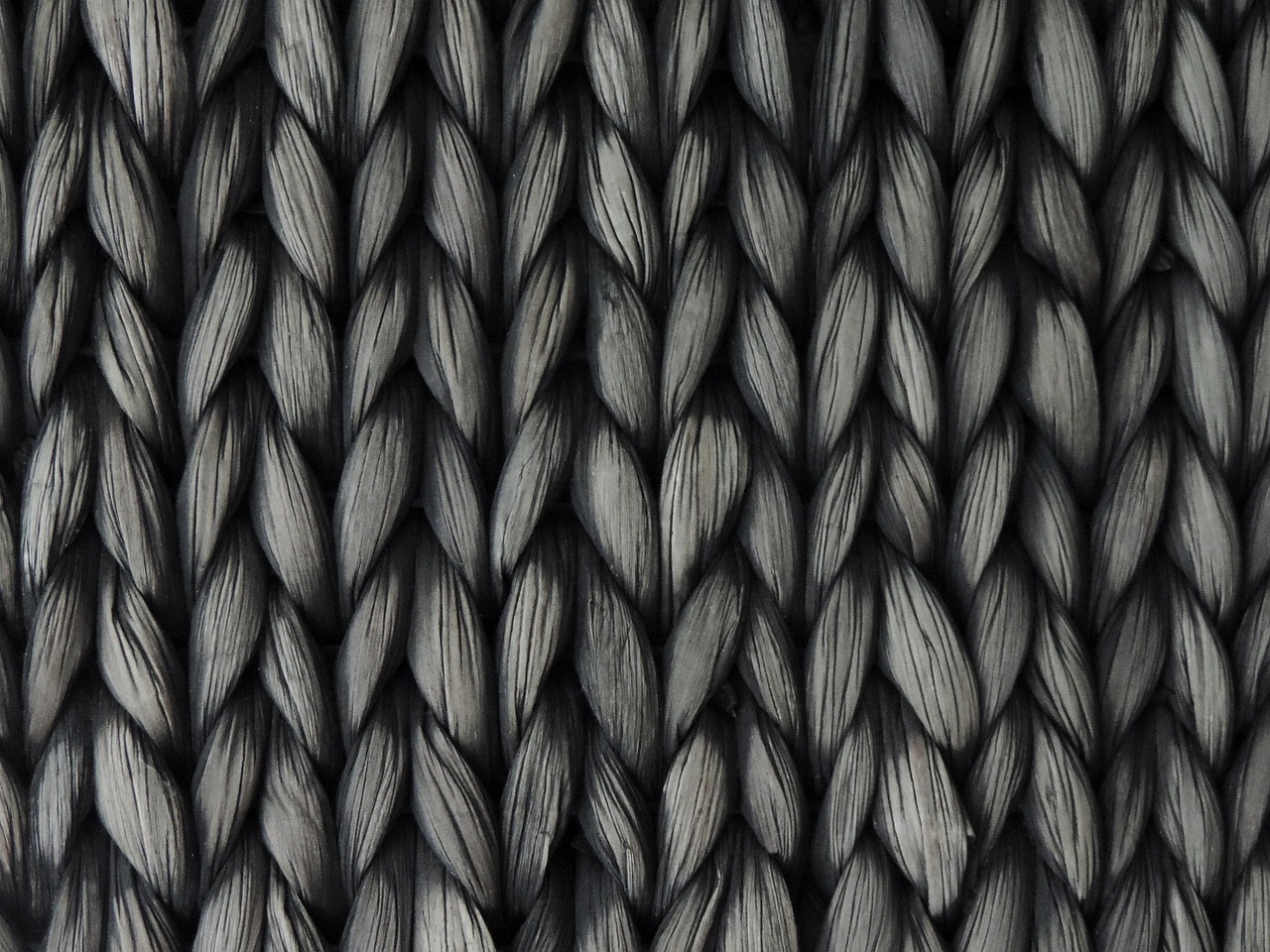In recent years, there has been a significant shift towards embracing natural fibers across various industries, and for good reason. These fibers, derived from plants and animals, offer a multitude of benefits that not only enhance our daily lives but also contribute to a healthier planet. So, what makes natural fibers so special? Let's dive into the myriad advantages they bring, from their environmental impact to their health benefits, and even their economic implications.
One of the standout features of natural fibers is their environmental sustainability. Unlike synthetic materials, which can take centuries to decompose, natural fibers are biodegradable and renewable. This means they can break down naturally without leaving harmful residues behind. The production process for these fibers often requires significantly less energy and water compared to their synthetic counterparts, making them a more sustainable choice. For instance, cotton and hemp are not only renewable resources but also provide a lower carbon footprint, which is crucial in our fight against climate change. By choosing natural fibers, consumers can actively participate in the movement towards a more sustainable future.
Using natural fibers can have a profound impact on our health and well-being. Many synthetic materials contain harmful chemicals that can leach into our environment and even our bodies. In contrast, natural fibers are generally hypoallergenic and free from these harmful substances, making them a safer choice for those with sensitive skin or allergies. Imagine wrapping yourself in a cozy blanket made from organic cotton or wearing a shirt crafted from soft linen—it’s not just comfortable; it’s also a healthier option for your skin. Moreover, natural fibers promote better indoor air quality by allowing moisture to escape, which can reduce the risk of mold and mildew in our living spaces.
When it comes to comfort, natural fibers like cotton and linen truly shine. These materials are known for their excellent breathability, allowing air to circulate freely. This is particularly beneficial in warmer climates, where synthetic fibers can trap heat and moisture against the skin. Imagine wearing a cotton t-shirt on a hot summer day; it feels light and airy, doesn’t it? This breathability not only enhances comfort but also helps regulate body temperature, making natural fibers a top choice for clothing and bedding.
Another remarkable property of natural fibers is their ability to wick away moisture. This means they can effectively draw sweat away from the skin, keeping you dry and comfortable. This characteristic is especially advantageous in activewear and undergarments, where moisture management is key to comfort during physical activities. Think about how refreshing it feels to wear a moisture-wicking shirt during a workout; it keeps you dry and focused on your performance rather than on discomfort.
Natural fibers also excel in temperature regulation. They provide insulation in colder weather while offering cooling properties when it’s hot outside. This versatility makes them suitable for various climates and seasons. For example, wool can keep you warm during winter, while linen is perfect for summer days. It’s like having a wardrobe that adapts to your environment, ensuring you stay comfortable year-round.
For those who suffer from allergies or have sensitive skin, natural fibers offer a comforting solution. Many of these fibers are less likely to cause allergic reactions compared to synthetic alternatives. This quality makes them ideal for baby clothing, bedding, and even home furnishings. When you choose natural fibers, you’re not just opting for comfort; you’re also making a choice that prioritizes health and well-being.
The economic benefits of natural fibers extend beyond personal health. These materials can be cost-effective due to their availability and lower production costs. By investing in natural fibers, consumers can support local economies and sustainable farming practices. This not only benefits the farmers but also promotes a more resilient agricultural sector.
The cultivation of natural fibers creates numerous job opportunities in farming and processing. This is particularly vital for rural areas, where employment options may be limited. By supporting natural fiber industries, we can contribute to economic growth and stability in these communities. It’s a win-win scenario that fosters both environmental and economic sustainability.
As consumers increasingly seek sustainable products, the demand for natural fibers is on the rise. This trend presents businesses with exciting new market opportunities. Companies that embrace natural fibers can differentiate themselves in a crowded marketplace, appealing to eco-conscious consumers who are willing to invest in products that align with their values. This shift towards sustainability not only enhances brand loyalty but can also lead to increased profitability.

This article explores the numerous advantages of incorporating natural fibers into various applications, from textiles to construction, highlighting their environmental, health, and economic benefits.
When it comes to , natural fibers truly shine as a beacon of hope in a world increasingly cluttered with synthetic materials. Unlike their synthetic counterparts, which can take hundreds of years to decompose, natural fibers such as cotton, hemp, and jute are biodegradable and renewable. This means that they break down naturally, returning to the earth without leaving a lasting mark on our planet. Imagine a world where the materials we use don’t linger like unwanted guests; that’s the promise of natural fibers.
Moreover, the production of natural fibers often requires significantly less energy and water compared to synthetic fibers. For instance, while it can take over 10,000 liters of water to produce just one kilogram of cotton, the same can be said for many synthetic fibers which rely heavily on fossil fuels and chemical processes. This lower resource consumption not only conserves precious water but also reduces our carbon footprint. In a time when every drop counts, choosing natural fibers is akin to casting a vote for the planet.
Natural fibers also contribute to soil health. Their cultivation can improve soil structure, increase fertility, and promote biodiversity. For example, hemp is known for its ability to replenish nutrients in the soil and suppress weeds, making it an excellent crop for sustainable farming practices. By opting for natural fibers, we’re not just making a choice for our wardrobes or homes; we’re supporting agricultural practices that are kind to the earth.
Additionally, natural fibers can be produced with minimal use of pesticides and fertilizers. Many farmers are turning to organic methods, which not only reduces chemical runoff into our waterways but also promotes a healthier ecosystem. This shift represents a significant step towards a more sustainable agricultural model that prioritizes the health of our planet over profit margins.
In summary, embracing natural fibers is not just about personal preference; it’s a commitment to . By choosing these materials, we are making conscious decisions that benefit the planet, enhance soil health, and support sustainable farming practices. The next time you consider your clothing, bedding, or even construction materials, remember that every choice counts and that natural fibers are paving the way for a greener future.
Using natural fibers can improve indoor air quality and reduce exposure to harmful chemicals found in synthetic fibers. They are often hypoallergenic and breathable, promoting better health and comfort.
Natural fibers like cotton and linen allow for better airflow, making them ideal for clothing and bedding. This breathability enhances comfort, especially in warmer climates.
Natural fibers effectively wick away moisture, keeping the skin dry and comfortable. This property is particularly beneficial in activewear and undergarments.
Natural fibers help regulate body temperature by providing insulation in colder weather and cooling properties in heat, making them versatile for various climates.
Many natural fibers are less likely to cause allergic reactions compared to synthetic alternatives. This quality makes them suitable for sensitive skin and those with allergies.
Natural fibers can be cost-effective due to their availability and lower production costs. Investing in these materials can also support local economies and sustainable farming practices.
The cultivation of natural fibers creates job opportunities in farming and processing, contributing to economic growth in rural areas.
As consumers increasingly seek sustainable products, the demand for natural fibers is rising, providing businesses with new market opportunities and potential profitability.

When it comes to our health, the materials we surround ourselves with can make a significant difference. Natural fibers are not just a trend; they offer a plethora of health benefits that can enhance our quality of life. Imagine wrapping yourself in a cozy blanket made from organic cotton or slipping into a pair of linen sheets. These experiences are not only luxurious but also contribute to better health. One of the most significant advantages of natural fibers is their ability to improve indoor air quality. Unlike synthetic materials, which can release harmful chemicals and volatile organic compounds (VOCs), natural fibers are generally free from these toxins. This means that when you choose natural fibers for your home, you're not just making an aesthetic choice; you're making a health-conscious decision.
Moreover, natural fibers are often hypoallergenic, making them a fantastic option for those with sensitive skin or allergies. Fabrics like cotton, wool, and silk are less likely to irritate the skin, providing a safer alternative to synthetic options that can cause rashes or discomfort. In a world where allergies are on the rise, choosing natural fibers can be a simple yet effective way to mitigate these issues. Think about it: when you wear clothes made from natural materials, you’re enveloping yourself in a layer that breathes and allows your skin to thrive, rather than suffocating it under a synthetic layer that can trap heat and moisture.
Another remarkable feature of natural fibers is their breathability. Fabrics such as cotton and linen allow air to circulate, which is especially beneficial in warmer climates. This breathability not only enhances comfort but also helps regulate body temperature. Imagine attending a summer wedding in a lightweight linen dress or shirt; the comfort level is unparalleled! These fibers allow your body to cool down naturally, preventing that sticky, uncomfortable feeling that often accompanies synthetic clothing.
Natural fibers excel in moisture absorption, which is crucial for maintaining skin comfort. They can wick away sweat and moisture, keeping you dry even during intense activities. For instance, if you're hitting the gym or going for a run, wearing clothes made from natural fibers can significantly enhance your performance. You won’t have to worry about that clammy feeling that comes from synthetic fabrics clinging to your skin. Instead, you can focus on your workout without the distraction of discomfort.
Temperature regulation is yet another compelling reason to opt for natural fibers. These materials have unique properties that provide insulation during colder weather while also offering cooling effects in warmer conditions. This versatility makes them suitable for year-round wear. Just like a trusty friend that knows how to adapt to any situation, natural fibers can keep you cozy in winter and cool in summer. Whether you’re layering up for a chilly evening or dressing down for a sunny day, natural fibers have you covered.
In summary, the health benefits of using natural fibers are numerous and impactful. From promoting better air quality to providing comfort and moisture management, these materials play a crucial role in our everyday lives. As we become more aware of the substances we interact with, making the switch to natural fibers is a step toward a healthier lifestyle.

This article explores the numerous advantages of incorporating natural fibers into various applications, from textiles to construction, highlighting their environmental, health, and economic benefits.
Natural fibers are biodegradable and renewable, making them an eco-friendly alternative to synthetic materials. Their production often requires less energy and water, contributing to a more sustainable future.
Using natural fibers can improve indoor air quality and reduce exposure to harmful chemicals found in synthetic fibers. They are often hypoallergenic and breathable, promoting better health and comfort.
When it comes to comfort, natural fibers like cotton and linen shine brightly. These materials are known for their breathability, allowing air to circulate freely, which is essential for maintaining a comfortable body temperature. Imagine wearing a shirt that feels like a gentle breeze on a hot summer day—this is the magic of natural fibers at work. Unlike synthetic fabrics that can trap heat and moisture, natural fibers provide a cooling effect, making them the go-to choice for clothing and bedding.
Furthermore, the softness of natural fibers adds to their appeal. There's nothing quite like the feeling of slipping into a cotton bed sheet after a long day. It’s like wrapping yourself in a warm hug! This level of comfort is particularly important for those who are sensitive to harsh materials. Natural fibers don't just feel good; they also promote better sleep and relaxation, which are crucial for overall well-being.
Additionally, the moisture-wicking properties of natural fibers are noteworthy. They effectively draw moisture away from the skin, keeping you dry and comfortable throughout the day. This characteristic is especially beneficial in activewear and undergarments, where sweat can be a nuisance. By managing moisture, natural fibers help prevent skin irritation and discomfort, allowing you to focus on your activities without distraction.
Moreover, natural fibers excel in temperature regulation. They provide insulation during colder months while also offering cooling effects in warmer climates. This adaptability makes them suitable for a variety of weather conditions, ensuring that you remain comfortable regardless of the season. Whether you're bundled up in a wool sweater during winter or lounging in a linen shirt during summer, natural fibers have got you covered.
Natural fibers can be cost-effective due to their availability and lower production costs. Investing in these materials can also support local economies and sustainable farming practices.
The cultivation of natural fibers creates job opportunities in farming and processing, contributing to economic growth in rural areas.
As consumers increasingly seek sustainable products, the demand for natural fibers is rising, providing businesses with new market opportunities and potential profitability.

This article explores the numerous advantages of incorporating natural fibers into various applications, from textiles to construction, highlighting their environmental, health, and economic benefits.
Natural fibers are biodegradable and renewable, making them an eco-friendly alternative to synthetic materials. Their production often requires less energy and water, contributing to a more sustainable future.
Using natural fibers can improve indoor air quality and reduce exposure to harmful chemicals found in synthetic fibers. They are often hypoallergenic and breathable, promoting better health and comfort.
Natural fibers like cotton and linen allow for better airflow, making them ideal for clothing and bedding. This breathability enhances comfort, especially in warmer climates.
One of the standout features of natural fibers is their remarkable ability to wick away moisture. Imagine wearing a fabric that not only feels soft against your skin but also keeps you dry, even when the heat is on. Natural fibers such as cotton, wool, and linen excel in this area, making them the go-to choice for anyone looking for comfort in their clothing and textiles.
When you wear clothes made from these fibers, they actively pull moisture away from your skin, allowing it to evaporate quickly. This property is especially beneficial in activewear and undergarments, where sweat management is crucial. For instance, cotton absorbs moisture and releases it into the air, which helps maintain a comfortable body temperature during physical activities.
Moreover, the moisture absorption capabilities of natural fibers can significantly enhance your overall comfort. Here’s a quick comparison to illustrate their effectiveness:
| Fiber Type | Moisture Wicking Ability | Ideal Use |
|---|---|---|
| Cotton | Good | Casual wear, bedding |
| Wool | Excellent | Activewear, outdoor clothing |
| Linen | Very Good | Summer clothing, table linens |
As you can see, each type of natural fiber has its unique strengths, but they all share the common trait of keeping you dry and comfortable. This makes them not only practical but also a smart choice for anyone looking to enhance their wardrobe with functional and health-conscious materials.
Natural fibers help regulate body temperature by providing insulation in colder weather and cooling properties in heat, making them versatile for various climates.
Many natural fibers are less likely to cause allergic reactions compared to synthetic alternatives. This quality makes them suitable for sensitive skin and those with allergies.
Natural fibers can be cost-effective due to their availability and lower production costs. Investing in these materials can also support local economies and sustainable farming practices.
The cultivation of natural fibers creates job opportunities in farming and processing, contributing to economic growth in rural areas.
As consumers increasingly seek sustainable products, the demand for natural fibers is rising, providing businesses with new market opportunities and potential profitability.

This article explores the numerous advantages of incorporating natural fibers into various applications, from textiles to construction, highlighting their environmental, health, and economic benefits.
Natural fibers are biodegradable and renewable, making them an eco-friendly alternative to synthetic materials. Their production often requires less energy and water, contributing to a more sustainable future.
Using natural fibers can improve indoor air quality and reduce exposure to harmful chemicals found in synthetic fibers. They are often hypoallergenic and breathable, promoting better health and comfort.
Natural fibers like cotton and linen allow for better airflow, making them ideal for clothing and bedding. This breathability enhances comfort, especially in warmer climates.
Natural fibers effectively wick away moisture, keeping the skin dry and comfortable. This property is particularly beneficial in activewear and undergarments.
One of the standout features of natural fibers is their remarkable ability to regulate temperature. Imagine stepping outside on a sweltering summer day and feeling the heat radiating off the pavement. Now, picture wearing a garment made from natural fibers like cotton or wool. These materials work tirelessly to keep you comfortable, regardless of the weather conditions. Natural fibers have the unique ability to provide insulation when it’s cold, trapping warmth close to your body, while also allowing for breathability when it’s hot, facilitating airflow that helps to cool you down.
For instance, when you wear a wool sweater in winter, it traps heat efficiently, keeping you cozy even in the chilliest conditions. Conversely, during a hot summer day, a cotton shirt allows your skin to breathe, preventing overheating. This dual capability makes natural fibers incredibly versatile. Here’s a quick breakdown of how different natural fibers help with temperature regulation:
| Fiber Type | Temperature Regulation Property |
|---|---|
| Cotton | Breathable and cool in hot weather |
| Wool | Insulating and warm in cold weather |
| Linen | Highly breathable and moisture-wicking |
This ability to adapt to various environmental conditions makes natural fibers a smart choice for anyone looking to maintain comfort throughout the year. They act like a second skin, adjusting to your body’s needs and the surrounding climate. So, whether you're hiking in the mountains or lounging at home, natural fibers have got your back—keeping you warm when it’s chilly and cool when it’s hot. Isn’t that just fantastic?
Many natural fibers are less likely to cause allergic reactions compared to synthetic alternatives. This quality makes them suitable for sensitive skin and those with allergies.
Natural fibers can be cost-effective due to their availability and lower production costs. Investing in these materials can also support local economies and sustainable farming practices.
The cultivation of natural fibers creates job opportunities in farming and processing, contributing to economic growth in rural areas.
As consumers increasingly seek sustainable products, the demand for natural fibers is rising, providing businesses with new market opportunities and potential profitability.

This article explores the numerous advantages of incorporating natural fibers into various applications, from textiles to construction, highlighting their environmental, health, and economic benefits.
Natural fibers are biodegradable and renewable, making them an eco-friendly alternative to synthetic materials. Their production often requires less energy and water, contributing to a more sustainable future.
Using natural fibers can improve indoor air quality and reduce exposure to harmful chemicals found in synthetic fibers. They are often hypoallergenic and breathable, promoting better health and comfort.
Natural fibers like cotton and linen allow for better airflow, making them ideal for clothing and bedding. This breathability enhances comfort, especially in warmer climates.
Natural fibers effectively wick away moisture, keeping the skin dry and comfortable. This property is particularly beneficial in activewear and undergarments.
Natural fibers help regulate body temperature by providing insulation in colder weather and cooling properties in heat, making them versatile for various climates.
One of the standout features of natural fibers is their . Unlike synthetic materials, which can contain harsh chemicals and irritants, natural fibers are often derived from plants or animals that are less likely to provoke allergic reactions. This characteristic makes them particularly suitable for individuals with sensitive skin or allergies.
For instance, materials such as cotton, bamboo, and silk are known for their gentle touch and are less likely to cause skin irritation. When you wear clothing made from these natural fibers, you are not just choosing comfort but also prioritizing your health. This is crucial in a world where many people are increasingly aware of what they put against their skin.
Moreover, the breathability of natural fibers contributes to their hypoallergenic nature. By allowing air to circulate, these materials help to reduce moisture buildup, which can be a breeding ground for allergens like dust mites and mold. In contrast, synthetic fibers can trap heat and moisture, creating an environment where allergens thrive. Therefore, if you’re looking to enhance your home’s air quality, incorporating natural fiber textiles can be a smart choice.
In summary, the hypoallergenic properties of natural fibers not only provide comfort but also create a healthier living environment. Choosing natural over synthetic is like opting for a breath of fresh air in a stuffy room—it just feels right!
Natural fibers can be cost-effective due to their availability and lower production costs. Investing in these materials can also support local economies and sustainable farming practices.
The cultivation of natural fibers creates job opportunities in farming and processing, contributing to economic growth in rural areas.
As consumers increasingly seek sustainable products, the demand for natural fibers is rising, providing businesses with new market opportunities and potential profitability.

When it comes to the economic landscape, natural fibers offer a plethora of advantages that can’t be overlooked. These materials, derived from plants and animals, are not only cost-effective but also play a significant role in supporting local economies and promoting sustainable farming practices. With the growing awareness of environmental issues, more consumers are shifting their preferences towards sustainable products, making natural fibers a hot commodity in today's market. This rising demand creates a ripple effect, benefiting various sectors.
One of the standout economic benefits of natural fibers is their affordability. Compared to synthetic fibers, the production costs for natural fibers are often lower. This is primarily due to their renewable nature and the fact that they require less energy for production. For instance, cotton and linen are widely available and can be grown in numerous regions, reducing transportation costs and making them accessible to manufacturers worldwide. This accessibility not only drives down prices but also encourages local production, further enhancing economic stability.
Moreover, the cultivation of natural fibers significantly contributes to job creation, particularly in rural areas. The entire supply chain—from farming to processing—requires a workforce, which means more job opportunities for local communities. For example, farmers who grow cotton or hemp, as well as those involved in processing these materials, benefit from this industry. This aspect is crucial for regions where agriculture forms the backbone of the economy. By investing in natural fiber cultivation, we are not just investing in materials but also in the livelihoods of countless individuals.
To illustrate the economic impact of natural fibers, consider the following table that showcases the job creation potential in various stages of the natural fiber industry:
| Stage of Production | Job Opportunities |
|---|---|
| Farming | Field workers, farm managers |
| Processing | Textile workers, quality control |
| Manufacturing | Designers, factory workers |
| Sales and Marketing | Retail staff, marketing specialists |
As we dive deeper into the economic advantages, it's essential to highlight the market demand for sustainable products. Consumers are becoming increasingly conscious of their purchasing decisions, favoring products that are environmentally friendly and ethically sourced. This shift not only opens up new market opportunities for businesses but also enhances their profitability. Companies that embrace natural fibers can position themselves as leaders in sustainability, attracting a loyal customer base that values ethical practices.
In conclusion, the economic advantages of natural fibers extend beyond mere cost savings. They enhance local economies, create job opportunities, and align with the growing consumer demand for sustainable products. As we move forward, investing in natural fibers could very well be a key strategy for businesses looking to thrive in an increasingly eco-conscious marketplace.

When we talk about natural fibers, it’s not just their environmental benefits that stand out. One of the most significant impacts of promoting natural fibers is the job creation it fosters in the agricultural sector. Imagine a bustling farm, with workers tending to fields of cotton, hemp, or flax. Every time we choose natural over synthetic, we’re not only making a sustainable choice but also supporting livelihoods. The cultivation of natural fibers requires a diverse workforce, spanning from planting and harvesting to processing and distribution.
These jobs are often located in rural areas, where employment opportunities can be scarce. By investing in natural fiber production, we’re essentially sowing the seeds for economic growth in communities that need it the most. Farmers and workers benefit directly from the demand for these materials, which can lead to increased wages and improved living conditions. Furthermore, as the market for sustainable products expands, so does the need for skilled labor in agriculture.
Let’s break it down a bit:
Moreover, the cultivation of natural fibers is often linked to sustainable farming practices, which not only benefit the environment but also promote long-term economic stability. As farmers adopt more sustainable methods, they enhance soil health and biodiversity, which can lead to more productive farms. This creates a virtuous cycle where both the economy and the environment thrive together.
In summary, the job creation potential in the agriculture sector through natural fiber production is immense. It’s a win-win situation: we get to enjoy the benefits of sustainable materials while simultaneously supporting local economies and creating meaningful employment opportunities. So next time you choose a natural fiber product, remember you’re not just making a purchase; you’re contributing to a larger movement that uplifts communities and promotes a healthier planet.
Q: What are natural fibers?
A: Natural fibers are materials obtained from plants, animals, or minerals that are biodegradable and renewable. Examples include cotton, wool, linen, and jute.
Q: Why should I choose natural fibers over synthetic ones?
A: Natural fibers are more environmentally friendly, often hypoallergenic, and provide better breathability and comfort compared to synthetic fibers.
Q: How do natural fibers impact the economy?
A: The cultivation and production of natural fibers create job opportunities in agriculture and related industries, supporting local economies and sustainable practices.
Q: Are natural fibers more expensive than synthetic fibers?
A: While natural fibers can sometimes be more expensive due to their production processes, the long-term benefits and quality often justify the investment.

The modern consumer is more informed than ever, and this awareness has sparked a significant shift towards sustainable products. As we navigate through an era defined by environmental consciousness, natural fibers have emerged as a front-runner in the marketplace. With a growing number of individuals seeking to lessen their ecological footprint, the demand for sustainable options has skyrocketed. But what does this mean for businesses and consumers alike?
Firstly, let’s consider the consumer perspective. People are increasingly prioritizing the health of our planet over convenience. This shift is not just a trend; it’s a fundamental change in purchasing behavior. Many consumers are now willing to pay a premium for products made from natural fibers, recognizing their environmental benefits. According to recent studies, approximately 66% of global consumers are willing to pay more for sustainable brands. This statistic highlights a burgeoning market that businesses can no longer afford to ignore.
On the business side, the rise in market demand for sustainable products presents a golden opportunity. Companies that pivot towards using natural fibers can tap into a lucrative market segment. Not only does this align with consumer values, but it also enhances brand loyalty. Customers are more likely to support brands that share their commitment to sustainability. In fact, a survey revealed that 73% of millennials are willing to switch brands if they find one that is more sustainable. This is a clear indication that sustainability is not just a buzzword; it is a driving force in consumer choices.
Moreover, as the demand for sustainable products grows, so does the need for transparency in production processes. Consumers are becoming increasingly skeptical and want to know the origins of the materials used in the products they buy. This demand for transparency encourages brands to adopt ethical practices and to source natural fibers responsibly. Companies that can effectively communicate their sustainability efforts will not only attract more customers but also build a strong reputation in the marketplace.
To illustrate the rising market demand for sustainable products, consider the following table that outlines the growth of the natural fiber market:
| Year | Market Size (in billion USD) | Growth Rate (%) |
|---|---|---|
| 2020 | 5.2 | 8.5 |
| 2021 | 5.7 | 9.6 |
| 2022 | 6.3 | 10.5 |
| 2023 | 7.0 | 11.2 |
This table demonstrates not only the growth in market size but also the increasing interest in natural fibers as a sustainable choice. The statistics speak volumes about the direction in which the market is heading. As businesses adapt to this demand, they not only contribute to a healthier planet but also secure their place in a competitive market.
In conclusion, the rising demand for sustainable products, particularly those made from natural fibers, is reshaping the landscape of consumer goods. Companies that embrace this change can expect not only to thrive but to play a pivotal role in fostering a more sustainable future. It’s a win-win situation: consumers get the products they desire, and the planet benefits from more eco-friendly practices.
Natural fibers are materials derived from plants, animals, or minerals. Examples include cotton, wool, linen, and jute. They are known for their biodegradability and renewable properties, making them a sustainable choice compared to synthetic fibers.
Natural fibers are biodegradable and renewable, which means they break down naturally and can be replenished. Their production typically requires less energy and water, reducing the environmental footprint compared to synthetic materials.
Yes! Natural fibers can improve indoor air quality and reduce exposure to harmful chemicals often found in synthetic materials. They are usually hypoallergenic and breathable, making them a healthier option for clothing and home textiles.
Natural fibers like cotton and linen allow for better airflow and moisture absorption. This means they keep you cool in the summer and warm in the winter, providing comfort in various climates.
Absolutely! Many natural fibers are less likely to cause allergic reactions, making them suitable for people with sensitive skin or allergies. They tend to be more breathable and less irritating than synthetic alternatives.
Natural fibers can be cost-effective due to their availability and lower production costs. Additionally, investing in these materials supports local economies and sustainable farming practices, creating jobs in agriculture and processing.
Yes! As more consumers seek sustainable products, the demand for natural fibers is on the rise. This trend provides businesses with new market opportunities and potential profitability in a conscious consumer landscape.